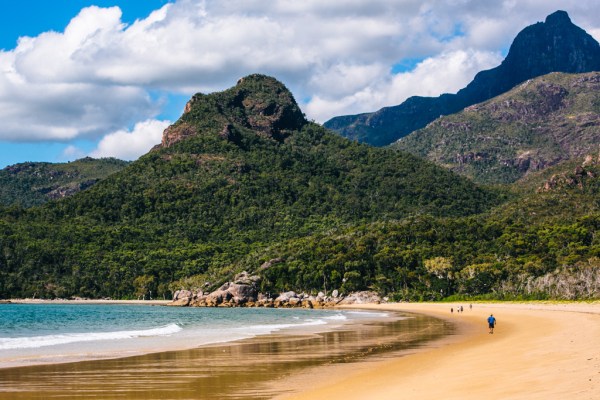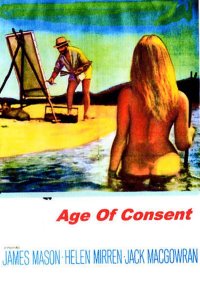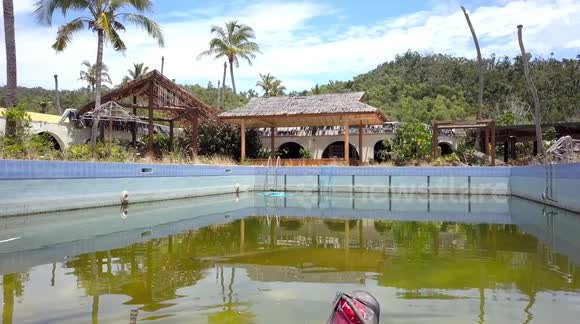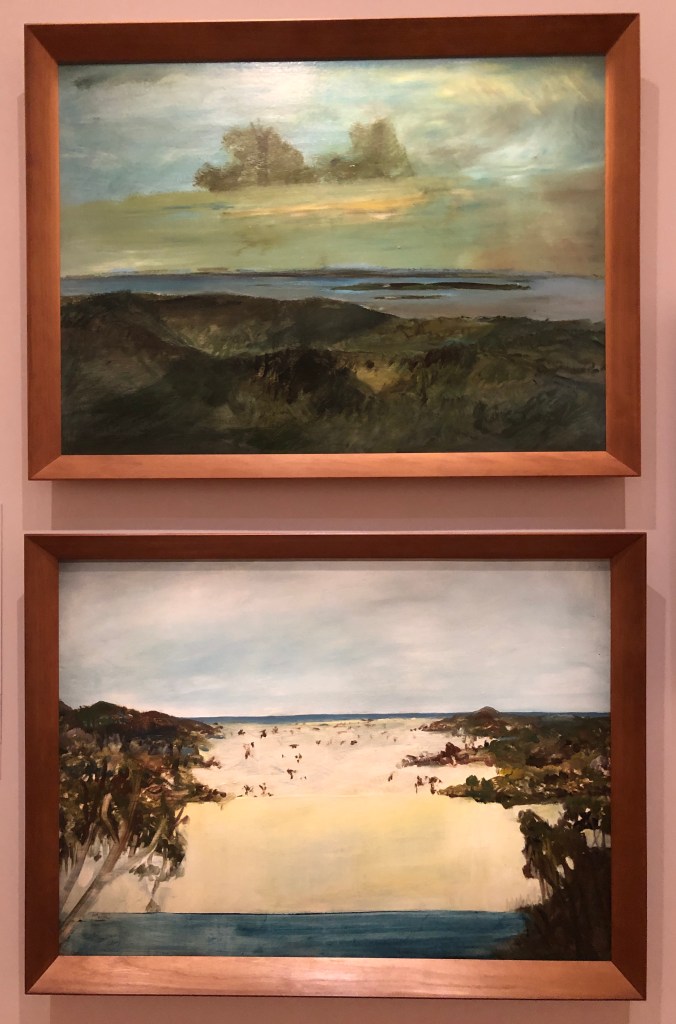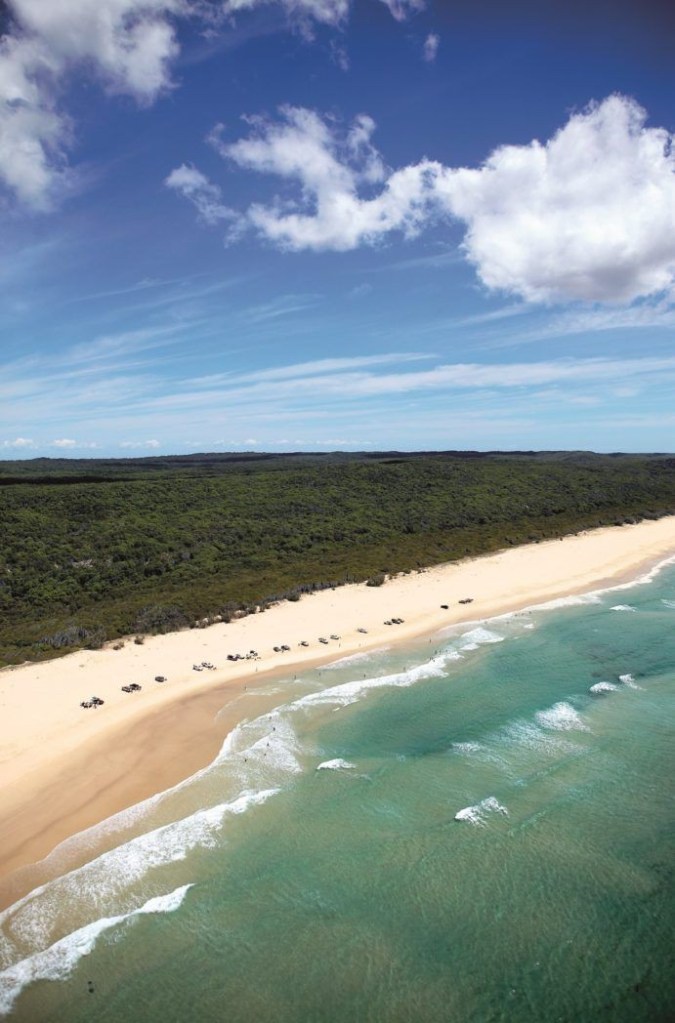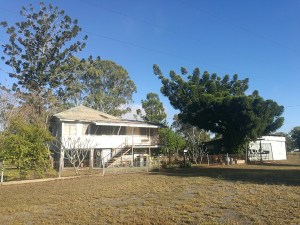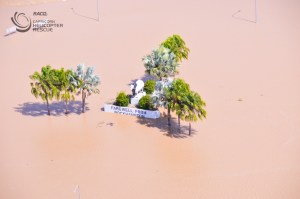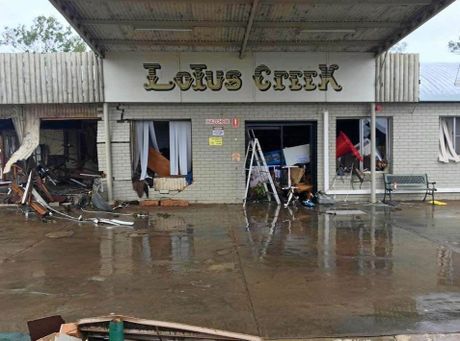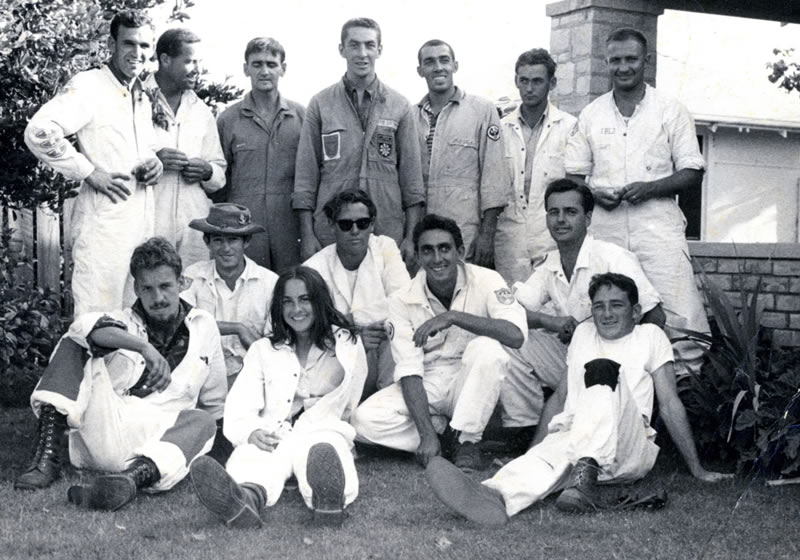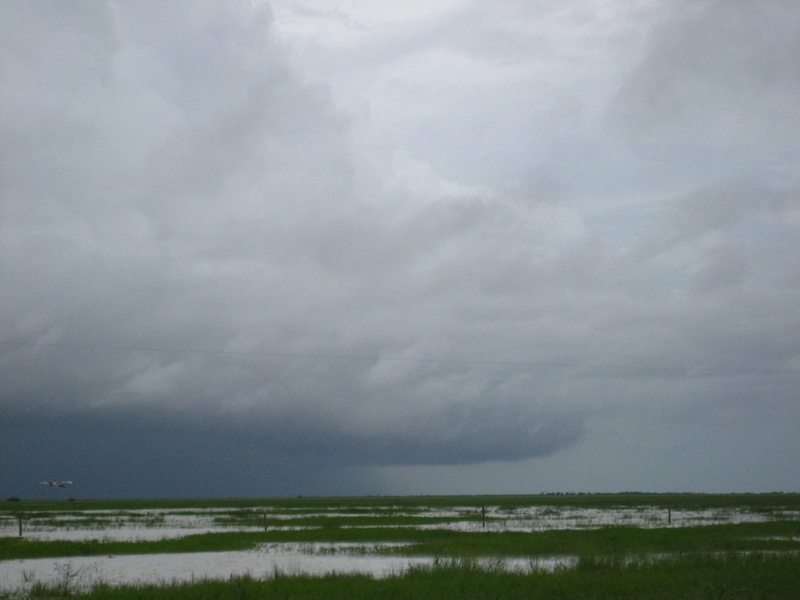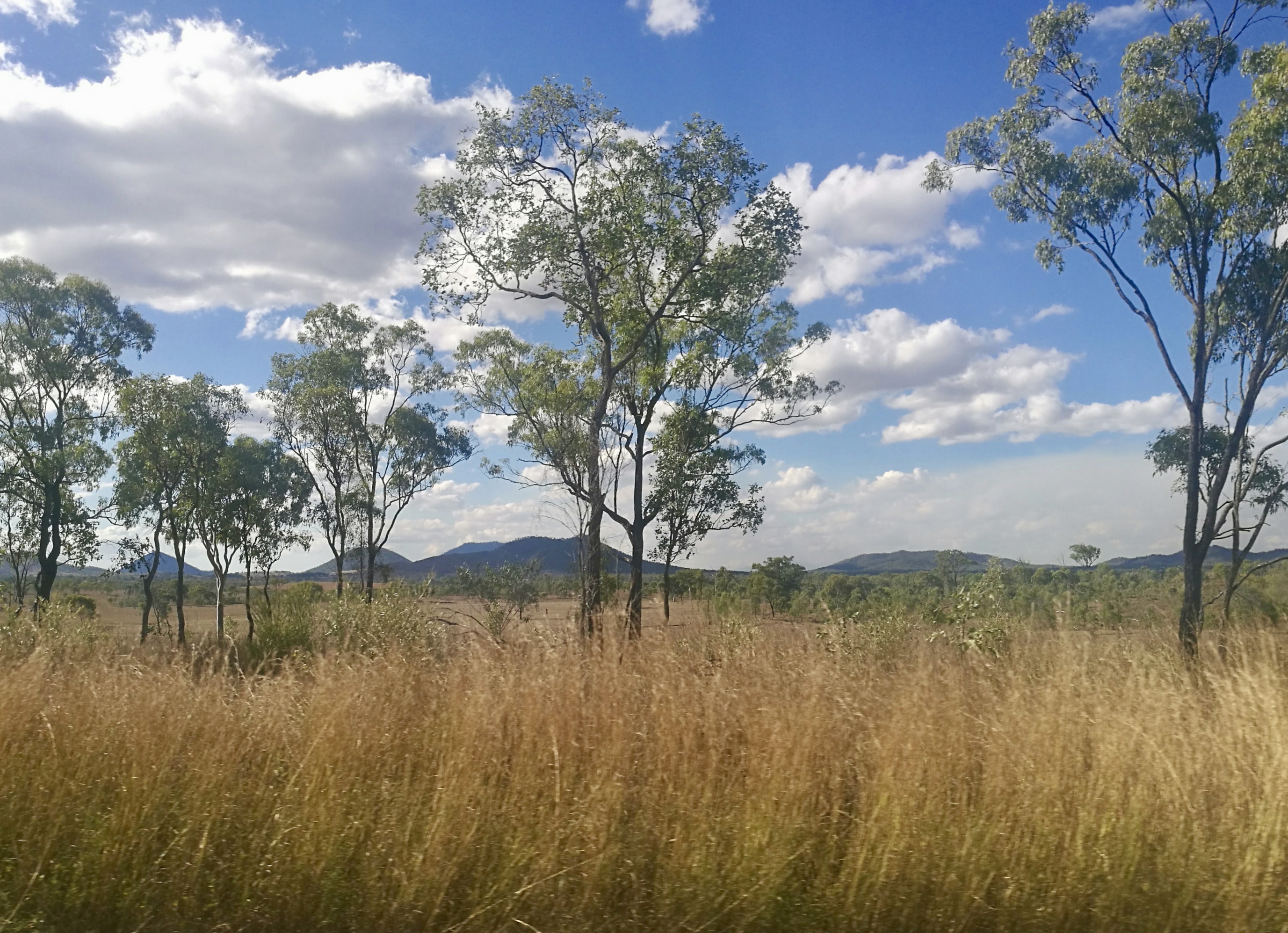You don’t need special tools to husk and crack a coconut. You can do it with a rock.
I went with my family many years ago on a boat trip to Green Island, off Cairns, but for some reason we had no money. Not for us a café lunch with the other tourists. Instead we set off to walk around the small coral island, just one and a half kilometres, with only a packet of Arnotts wheatmeal biscuits to share.
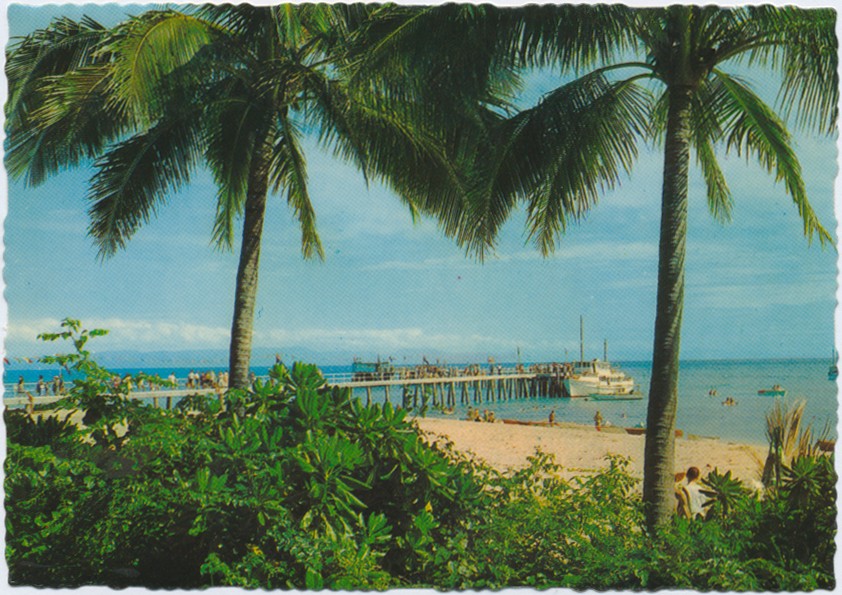
There was food lying around, though – coconuts fallen from the palms that ringed the island. My dad, always the boy scout, set about opening one of them with a rock – slicing through the husk, then cracking the shell. Fresh coconut meat for lunch.
Back at the wharf with the other, well-fed tourists we felt the slight smugness of those who choose the more adventurous path.
Years later, I went again to Green Island with my own children. It was 1982, and Hayles Cruises had just begun a fast catamaran service to the island. A cold meat and salad buffet was served on the way.
Joe was not quite six at the time, and all he remembers of the day is not the glass-bottomed boat or the underwater observatory, but that to eat our lunch we were provided with double-bowled plastic cats’ dishes. Catamaran. Get it?
Queensland has a long coastline and many islands, spread over more than two thousand kilometres, from Torres Strait to Moreton Bay – rocky islands that are an extension of the mainland, coral islands and sand islands. Coconuts grow as far south as the Great Barrier Reef stretches, to the Bundaberg area. Some were planted on the islands by European expeditioners so there would be food for seafarers marooned there in the future.
Queensland’s islands attract tourists and people looking for an idyllic way of life, artists and academics of various disciplines and the occasional filmmaker and politician. The ageing James Mason and teenaged Helen Mirren starred in the 1969 movie “Age of Consent”, filmed on Dunk Island, off Mission Beach, surely one of the most idyllic islands of them all. It was great for the locals to see one of their own beautiful places on the big screen. Con and I watched it at the Airdome Theatre in Innisfail.
We watched it again last year, and found that our values have changed. The story of a naïve young girl persuaded to take off her clothes to model for the much older artist, and then having an affair with him, seems most unsavoury now.
I first saw Dunk Island (Coonanglebah in the local Indigenous language) from a holiday flat at Mission Beach, a much cheaper option than staying at the island resort. Islands are expensive.
Torres Strait, Australia’s most northerly region, has around 274 islands and coral cays, many uninhabited, with dry and rocky Thursday Island (Waiben to the locals) the administrative centre. There is a story about a group of marine scientists from the United States who went to the Strait to study dugongs. For weeks they went out in boats, searching the seagrass beds for dugongs, and found none. When it was time to leave, they were invited to a local feast. The main course was dugong.
When driving over the Cardwell Range, we often stop at the lookout for one of Queensland’s most spectacular sights: Hinchinbrook Island (Pouandai) – a place of beauty and mystery.
Fifty-two uninhabited kilometres of cloud-capped granite mountains, jungle and waterfalls, mangroves and crocodiles and long, long beaches.
Lizzie and I went there on the ferry from Lucinda and walked up the white, sandy beach, sadly littered with plastic bottles and rubbish washed up by the sea, and into the forest to visit beautiful Mulligan Falls for a swim.
Hinchinbrook Island used to have a resort. Ruined by financial difficulties, and then by Cyclone Yasi in 2011, it is now derelict, like the lush resort on Dunk Island. If you want to stay on Hinchinbrook, perhaps to hike the rugged Thorsborne Trail, you have to book ahead, and take everything you need on your back.
My kids recall with pleasure a family boat trip around the Whitsunday Islands, off Airlie Beach and Proserpine, during our 1982 trip.
We called at Hook Island, and then South Molle Island – memorable to the kids because of its magnificent swimming pool.

These islands are a tourism magnet – or they were before Cyclone Debbie arrived. Cyclone Debbie, in January 2017, wiped out the South Molle Resort. It now lies rotting away in the heat, its fine pool derelict.
The climate is challenging. It’s also extremely expensive to build and maintain isolated island resorts to the high standards expected by modern tourists. Many of these idyllic places may never recover, but in the Whitsundays, Hayman, Daydream, and Hamilton Islands have reopened for business.
Fraser Island (K’gari), the world’s largest sand island, is 122 kilometres long, and World Heritage listed for its variety of outstanding natural features – rainforest, long sandy beaches, gorgeous freshwater lakes perched in its sand dunes.
With friends in a 4WD we drove up that wonderful stretch of beach past people swimming and sunbathing and fishing in the surf.
Crossing the island on sand tracks we visited Lake Mackenzie and the beautiful clear water of Eli Creek, and stayed the night at Kingfisher Bay Resort.
Late last year, a bushfire started from an illegal campfire in the national park in the northern part of Fraser Island was allowed to burn through much of the precious bushland before serious firefighting began. Professional firefighting resources were not brought in until “assets” were under threat – Kingfisher Bay Resort, for instance. If the World Heritage forests of Fraser Island are not its chief “assets”, however that is defined, I don’t know what is.
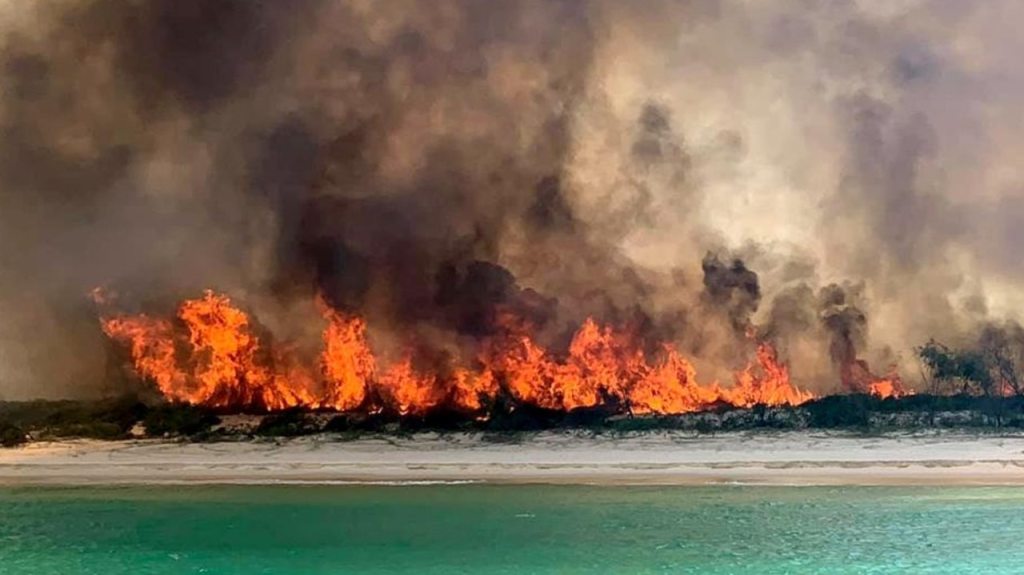
Do insurance companies contribute heavily to fire brigades? Maybe that has something to do with it. National parks don’t make insurance claims.
I hope one day I’ll get to visit Lady Musgrave Island (Wallanginji), a tiny, protected coral cay at the southern end of the Great Barrier Reef. I’d like to snorkel in the clear waters of the lagoon, spot green and loggerhead turtles, dolphins and birds, as our Lizzie and her family did a couple of years ago. For them, it was an unforgettable experience
You can camp there, with a permit, and I’ve heard that large sea turtles have been known to crawl through campsites and under tents, single-mindedly heading for a sandy spot to lay their eggs or on their way back to the sea.
So many Queensland islands to write about, and I haven’t even started on the Moreton Bay islands, some of the most beautiful of them all.
No coconuts there though.
